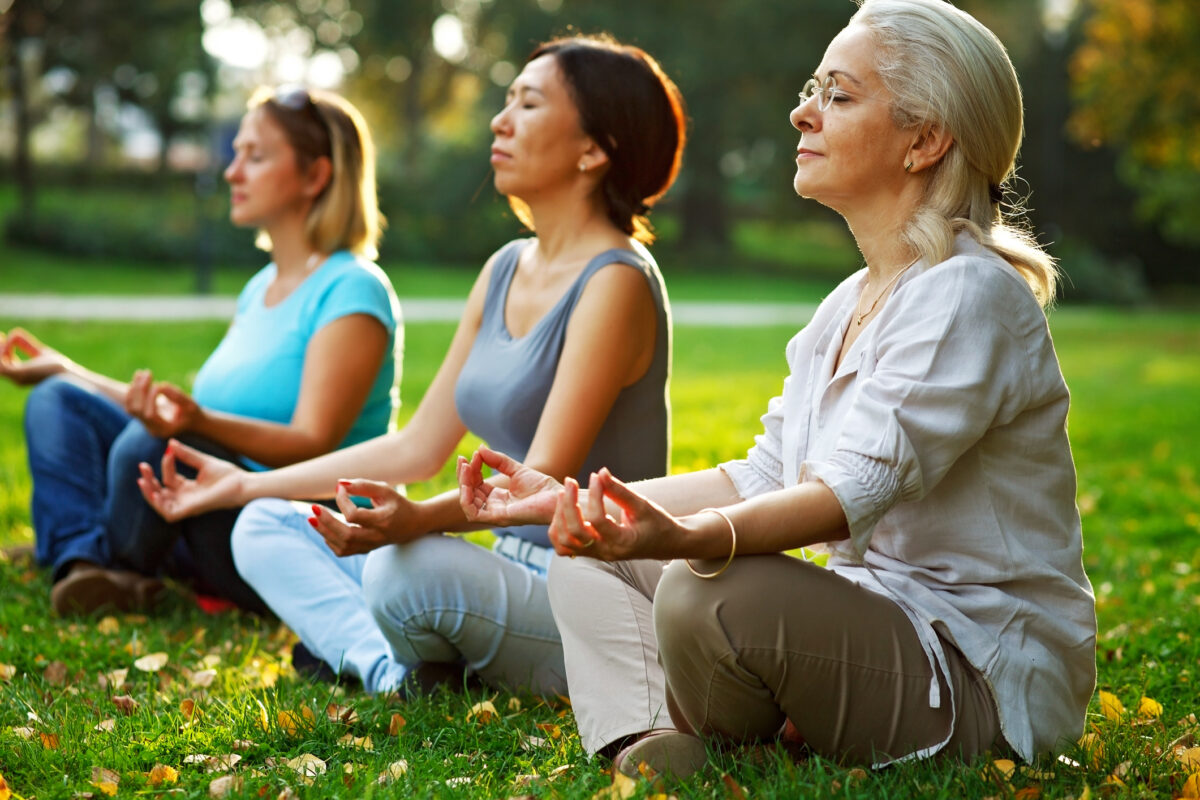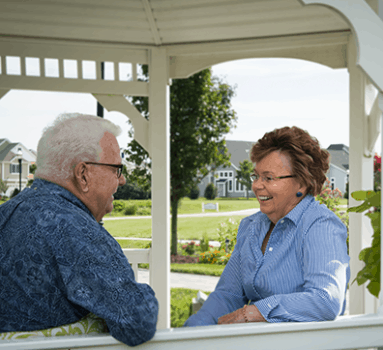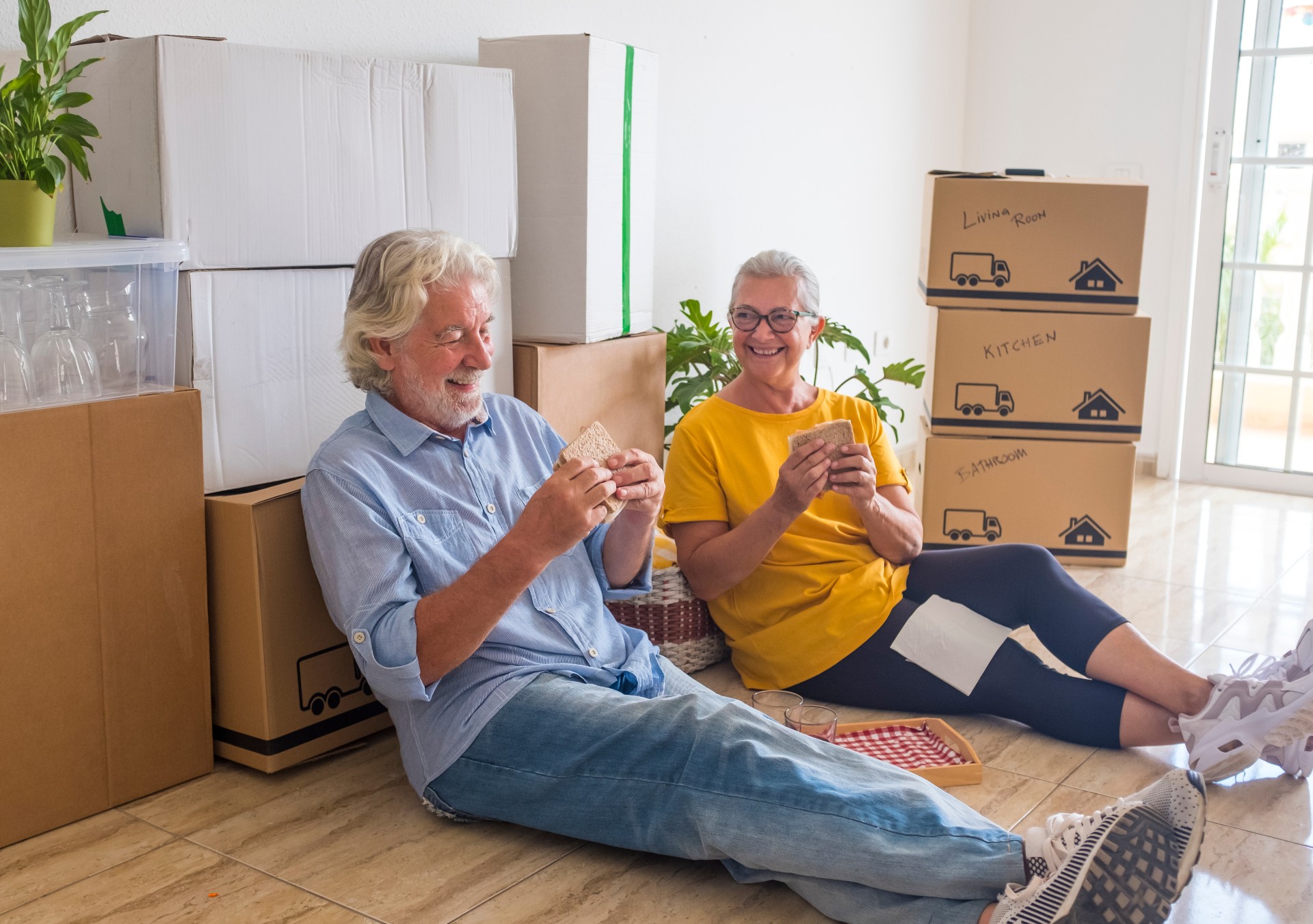The Benefits of Mindfulness and Meditation Exercises for Seniors
August 10, 2022
When it comes to health, most seniors think of taking care of their physical well-being; however, the mind is equally important. Here are just a few of the physical and emotional benefits of mindfulness and meditation.
How to meditate
Meditation doesn’t mean the same thing to everybody. For some, it means practicing yoga a few times a week. For others, it means clearing the mind and relaxing for a few minutes before bed. You could also meditate on your daily walk through the neighborhood. Find the method that makes you feel the most relaxed and at ease.
One of the most popular forms of meditation for seniors is the body scan. Here’s how it works:
- Find a comfortable location and position.
- Take deep breaths.
- Try to notice the things around you and what’s affecting your senses. What do you see, smell, taste, hear, and feel?
- Try to relax every muscle in your body, starting with your toes and working your way up.
If you want to incorporate light exercise into your meditation routine, consider any physical limitations you may have first. There are several low-impact exercises that minimally affect bones and muscles.
A doctor, physical therapist, or instructor will be able to help you identify which exercises can be conducted safely. Remember, meditation isn’t supposed to be intense; it’s meant to relax your body and mind.
Stress reduction through yoga and light exercise
Seniors face a lot of stress. According to the Centers for Disease Control and Prevention, feelings of sadness or anxiety can be significantly exacerbated by chronic health conditions and mobility issues.
As such, finding positive ways to reduce stress and improve mood is crucial. Meditation exercises are designed to create a sense of tranquility and reduce anxiety. What’s more, many meditation techniques promote healthy sleeping habits, thus improving mental health.
Movement also plays a key role in many people’s mindfulness practice. In addition to the calming exercises outlined above, many seniors enjoy yoga. Mindful yoga focuses on mind-body awareness and is frequently practiced before meditation. This involves stretching the body and holding poses that promote positive energy.
You don’t need to push yourself physically to enjoy the benefits of mindful yoga, and your poses don’t need to be perfect. Over time, your form, as well as your overall flexibility, balance, and strength, will improve. Yoga may also help control chronic pain by combining light activity with breathing exercises.
If you choose to include yoga in your meditation routine, consider a guided class. An instructor can help you better understand any physical limitations you may have and identify gentle poses that help improve mindfulness.
Lowering blood pressure through meditation
Many seniors struggle with hypertension and other blood pressure issues. Because most meditation techniques combine mindfulness exercises with physical movement, they have a measurable impact on blood pressure.
This is confirmed by several studies, which show that relaxation and light exercise can promote cardiovascular health. According to a 2012 study published in the International Journal of Hypertension, “transcendental meditation and mindfulness-based stress reduction may produce clinically significant reductions in systolic and diastolic blood pressure.”
Improving attention span and memory with mindfulness exercises
All meditation exercises focus on relaxing the mind, which can directly impact memory loss and attention span. They activate the area of the brain that controls memory and learning. Meditation also trains people to use the subconscious part of their minds, promoting information retention.
Most people start enjoying the benefits of an increased attention span right away. One simple technique to stimulate the mind is to practice gratitude. This could be as simple as thinking of a few things you are grateful for while you meditate. A 10-minute routine that requires no physical activity was published by Ohio State University, and a transcribed how-to guide can be accessed on Berkeley University of California’s Greater Good in Action website.
There are several benefits to practicing meditation routinely; for seniors, it can help reduce stress, improve flexibility, lower blood pressure, and boost memory. Talk to a professional today about which meditation and mindfulness exercises are right for you.
More than just an activity program, The Atrium at Navesink Harbor’s LivWell is a wellness living program that caters to each of seven dimensions of wellness, with a deep understanding of our physical, intellectual, emotional, social, environmental, spiritual, and vocational needs. Contact us to find out more about our Life Plan Community in Red Bank, NJ.




